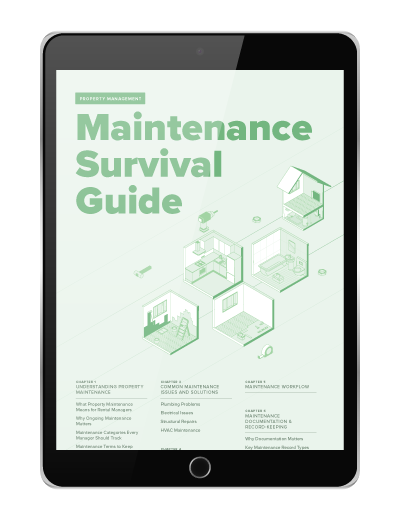The terrain of the Pacific Northwest is incredibly diverse: lush rainforests thrive right near coastal plains that stretch for miles. A confluence of mountain ranges, rivers and plateaus provide the perfect backdrop for outdoor enthusiasts, and plentiful rainfall and mild summers make it an ideal location for landscape lovers.
It’s no wonder that protecting the Northwest’s natural resources and beauty is of great concern to those who live there. As a result, the Northwest has become, arguably, the epicenter for sustainable building and landscape design.
Over the past several weeks, we’ve profiled the many eco-friendly landscape trends taking over the Northeast, Southwest, and Southeast. In this final installment of our four-part series, we’ll look at the green landscaping trends taking root in the Northwest—the place for cutting-edge sustainable landscaping practices.
Rainwater Harvesting
Unlike the Southwest’s recent extreme draught conditions, the Northwest benefits from frequent rainfall, and it is not taken for granted. “Rain water is becoming more and more important and keeping it onsite is an emerging trend,” says Susan Cohan of Susan Cohan Gardens. “Where it is allowed, rain water harvesting is being incorporated as rain water features and as an auxiliary water source.”
There are a few ways to harvest rainwater, including:
- Rain barrels, which capture rainwater as it rolls off a roof and into a barrel. The barrel has a spigot that can be hooked up to a hose or used to drain into a watering can.
- Permeable pavers, which can capture water that would otherwise be runoff, and preserve the integrity of local sewage infrastructure.
Biofiltration Swales
Another way to reduce runoff is to install a biofiltration swale (bioswale), which uses grass and other vegetation to filter out sediment and oily materials. Under normal conditions, bioswales are shallow channels containing a variety of shrubs, trees and grasses. When it rains, stormwater runoff passes through the swale slowly, and the vegetation filters toxins out before they are deposited in the ground.
Bioswales can be enhanced with a field inlet (a concrete structure that collects stormwater and routes it through underground pipes) and/or sediment traps (slotted grates that prevents debris from flowing along with stormwater). In either case, routine maintenance is important to prevent buildup or blockages.
Reusing Concrete
Rather than hauling old patio, driveway, or walkway materials to the landfill, many homeowners are opting to reuse the concrete as crushed stone. It can be used as granular fill, as a base for a new patio, or as aggregate in new concrete.
Along these same lines, “urbanite” (commonly known as broken concrete) is a more popular alternative to flagstone. Urbanite can be recycled into pavers for patios, stacked into blocks for a retaining wall, or used as borders to hold back soil along the edges of an outdoor patio.
Covered Pergolas and Patio Gardens
As the cost of living in the Northwest, particularly in places like Seattle and Portland, continues to rise, homeowners are opting for smaller properties and then fully utilizing every nook and cranny. One way to do so is by bringing the living area outside through covered pergolas and patio gardens. These design features are perennially trendy because they are small and easy to enjoy as an extension of the house.
Bonus: they are increasingly being built with recycled materials. Urbanite (see above), reclaimed lumber (from old barns, pallets or construction sites), and “up-cycled” accessories (e.g. bird feeders made of recycled bottles; an old horse trough repurposed into a water garden) are all easily integrated into the outdoor design.
Corten—or weathering steel—is then used to finish off the area, because the steel is made with alloys that create a self-protecting rust when exposed to weather, which limits its need for frequent painting, weather proofing, or replacement—without compromising its strength.
A Shift from Landscape Design to Lifestyle Design
In the Northwest, sustainability is more than a design feature—it’s a whole new way of life. And developers, property managers and homeowners’ associations are investing in a comprehensive overhaul of their landscaping practices.
One of the most noteworthy examples of this is the sustainable redevelopment of High Point in Seattle. This award-winning project, spearheaded by the Seattle Housing Authority, has become a standard-bearer for sustainable, healthy living. Elements include: a natural drainage system across the entire site; installation of permeable pavement (including the State’s first pervious concrete street in a public right of way); allergen-free landscaping; multiple biofiltration swale cells that are lined with native and drought-tolerant plants; and a central stormwater collection pond that helps with flood control and water treatment before runoff flows into the Longfellow Creek. Certainly, not all projects will be the scale of High Point’s transformation, but the redevelopment shows how endless the opportunities are in terms of promoting sustainable landscaping design.
A Worldwide Revolution
The increasing frequency of extreme weather events—droughts, tornadoes, hurricanes and blizzards alike—are a reminder that the planet is bumping against its physical and ecological limits. Traditional landscaping, with its heavy reliance on chemicals, fossil fuels, labor and materials, is no longer the simple solution it once was. The new paradigm is sustainable landscaping, and as this four-part series shows, there’s no “one-size-fits-all approach.” While the trends taking root in different parts of the U.S. might vary, collectively, they stand to have a big impact on the health and sustainability of our environment.
Read more on Maintenance

